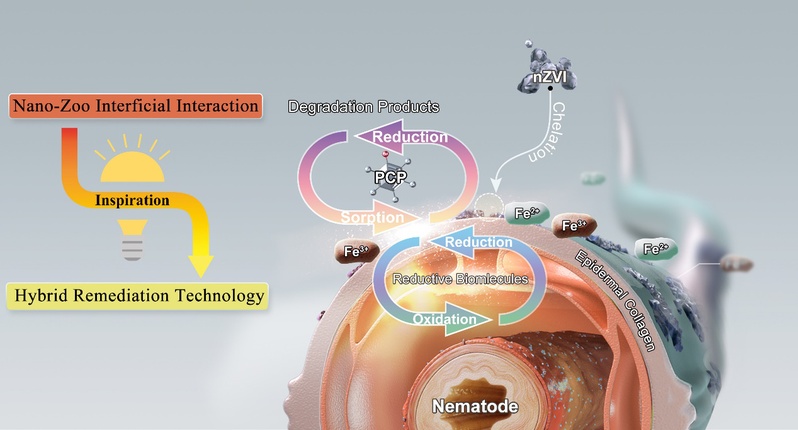《ACS Nano》:CERS Researcher Designs a New Collaborative Remediation Technology for Soil Pollution Based on Nano-animal Interface Interaction
2021-09-15
The research was inspired from the interface interaction between nano - animals, build and optimize the against organochlorines contaminated soil of nanometer zero-valent iron (nZVI) - nematodes synergy repair system, with low dosage of nZVI achieve safe and efficient repair, economic efficiency for the development of nano - biological provides inspirational model collaborative technology to repair,It is expected to be applied in more soil pollution scenarios.
Abstract:
Using nanotechnology to remediate contaminated agricultural soil is promising but faces notable technical and economic challenges. Importantly, widely distributed soil invertebrates can potentially act as natural mobile facilitators for in situ nanoscale remediation of contaminated soil. Herein, we have drawn inspiration from nano–bio interaction and established a hybrid remediation framework using nanoscale zerovalent iron (nZVI) and nematodes for organochlorine-contaminated soil. Approximately 80% pentachlorophenol (PCP, initially 50 mg/kg) was synergistically degraded by nZVI and nematodes within 3 days. Mechanistically, exposure to nZVI stimulated the synthesis of reductive biomolecules (including collagen, glutathione, and l-cysteine) which acted as a bioreductive barrier and significantly mitigated the toxicity of PCP. At the microinterface, collagen distributed in the epidermis chelated nZVI; subsequently, l-cysteine and glutathione strongly accelerated nZVI-induced PCP dechlorination by facilitating the reductive dissolution of nZVI oxide shell and electron transfer from Fe0 core to PCP. On the basis of the interfacial interaction, an optimized soil remediation approach composed of nZVI, nematodes, and l-cysteine was established, demonstrating a 2.1-fold increase in removal efficiency with only 48.5% nZVI consumption compared with the nZVI treatment alone. This work provides a heuristic model for developing cost-efficient remediation technologies with the synergistic force of functional materials and indigenous biota, which may be widely applicable to a range of environmental contamination scenarios.

